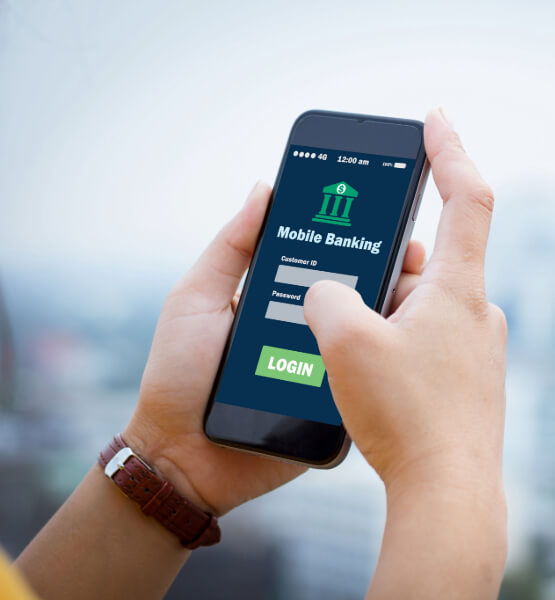Nowadays, many of our financial transactions are performed online. That comes with both convenience and risks. Thankfully, cyber security measures are keeping up with the digital banking trends. Cyber security helps protect sensitive financial information such as credit card numbers, bank account information, passwords, PINs, Social Security numbers, and more.
There are numerous ways to protect against unwarranted access to your financial data and assets, and it’s important to know the basics of cyber security when it comes to data that significant. Read on to find out more about cyber security in banking.
What Are Cyber Security Threats in Banking?
Unencrypted data is easily readable so encrypting sensitive data is extremely important. Even if hackers access this data, they can’t do anything right away if it’s encrypted, giving you time to respond and protect yourself.
PhishingPhishing attacks involve impersonating supposedly trustworthy sources. The goal is to trick people into giving up personal information, including bank account numbers. In some cases, a phishing scam can even lead to unauthorized transactions.
MalwareShort for “malicious software,” that’s exactly what this cyber security threat is. Once downloaded to your computer, malware can be used to steal sensitive information.
RansomwareOver the past few years, the rise of ransomware has been one of the most persistent threats faced by financial institutions. Ransomware is a form of malware in which hackers lock individuals out of their own accounts or refuse to decrypt accounts until a ransom is paid, hence the name.
Cloud Threats and AttacksA cloud is a collection of servers where a multitude of data is stored. An attack could affect hundreds of thousands of accounts. To combat this threat, it’s important for financial institutions and individuals to update and upgrade cloud security solutions.
Supply Chain AttacksThis is when hackers attack an individual by going through a compromised third party.
What Cyber Security Strategies Protect Your Financial Data?
Individuals may not have access to the same exact cyber security tools as major financial institutions, but there are many ways to protect your personal data. With something as sensitive as finances, being proactive is essential.
Be Cautious Using Public Wi-FiPeople connect to public wireless networks and access personal information every day. Apps, websites, and cell phones make online and mobile financial transactions so much easier. However, public Wi-Fi networks might not be secure.
Public places like bars, cafes, restaurants, office buildings, schools, and so on may reduce their network security so that it’s easier for people to use their Wi-Fi. But that reduced security means your most sensitive information can be more vulnerable.
Take Precautions When Using Public DevicesThe same rules for public Wi-Fi also apply to public computers. And if you do need to use a public computer for financial transactions, clear the cache and history when you’re finished.
Strong Passwords and PINsWhen you create a password or PIN, avoid including personal information like your name or birthday. A strong password is intentionally hard to remember. But avoid saving it in a digital document on your computer or cell phone. Instead, you should use a secure password manager.
You should also try to change your passwords regularly. Some recommend creating a new strong password every three months. Also, avoid sharing your passwords or PINs with others.
Security SoftwareAntivirus software is frequently used for cyber security, including in banking. Financial institutions aren’t the only ones who should protect their internet devices, however. You should too. Once installed, make sure to keep this software up to date.
Two-Factor AuthenticationOne strategy for cyber security in banking is adding an extra step to the log-in process. Many financial institutions implement this on their websites and mobile apps. After you enter your username and password, a code is sent to the email or phone number attached to the account, and you aren’t allowed to access your account until that code has been confirmed.
Protect From PhishingAvoid responding to, clicking on links within, or opening attachments connected to suspicious emails or texts. If you get a message that asks for your personal financial information, it’s wise to call your financial institution before taking any action. Make sure you call the number on their official website, not the number in said email.
A good rule of thumb is that financial institutions typically do not ask for sensitive information through emails or text messages. Neither will the IRS. Impersonating that organization is another very popular phishing scam. Be cautious of anyone contacting you who claims to be from an insurance company or a government agency (such as Social Security or Medicare).
In general, avoid sending personal and financial information through email or text, even if the message looks official. Also, if you get a phone call that asks for your financial information, do not give it over the phone. Financial institutions and government agencies won’t usually call you, but scammers will.
Review Credit ReportsYou can get one free credit report from each of the three credit bureaus every year. Take advantage of that. Carefully review your credit reports, even if you assume everything is in order. There may be an unexpected error. If you spot something suspicious, contact your financial institution. You don’t want your credit history or your financial security to be negatively impacted.
In addition to your credit report, you should also review monthly bank statements. And keep an eye on your credit score in case there’s a sudden dramatic drop. The sooner you catch something that may be suspicious or unauthorized activity, the better.
Be Cautious With Physical DocumentationCyber security obviously focuses on the online world, but it’s still important to protect your physical financial documents as well. Sometimes, fraudsters will go through trash bins to uncover other people’s financial information. Before you throw anything with important personal info away, put it through a shredder.
Don’t Overshare on Social MediaThis is a good rule of thumb for many reasons. When it comes to cyber security with banking, social media can make it easier for hackers to impersonate you. If you have a password that’s more obvious than strong, your social media activity can make it easier for hackers to make a correct guess. The same goes for security questions.
Cyber security is vital to keeping your financial information safe, and you can take your efforts a step further by working with a financial institution that you trust. Choose an institution such as Capital Credit Union, which provides secure digital banking options, online resources, and education for financial wellness, all designed to help you keep your information safe. Ensure that your financial institution uses the best tools to protect members’ sensitive information.
